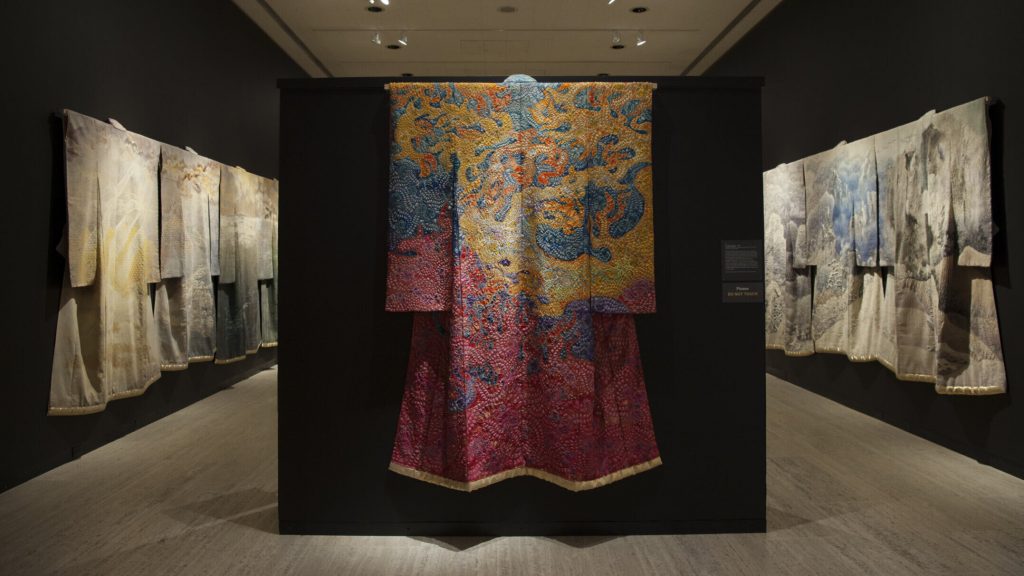Kimono: Fashioning Identities
The kimono is one of Japan’s most iconic symbols, its colors and designs exemplifying Japanese cultural sensibilities and aesthetics. Lesser known, however, is that, the kimono originated as an undergarment. The predecessor to today’s kimono is a robe called the kosode (literally, “small sleeve openings”). The kosode first came into its own as an outer robe in medieval Japan during the Muromachi period (1392–1573). It was decorated accordingly with lavish dyed, embroidered, and gold or silver patterns.
This exhibition traces the kimono from its inception some eight hundred years ago to its role today as a symbol of Japanese culture with increasing sway on the contemporary fashion scene. Featuring some of the finest extant textiles, paintings, prints and other artworks drawn from collections in Japan and around the world, KIMONO: Fashioning Identities promises to be a once-in-a-lifetime opportunity to consider the past, present, and future of this quintessential Japanese garment.
Highlights of the exhibition: https://www.tnm.jp/modules/r_free_page/index.php?id=1987&lang=en

